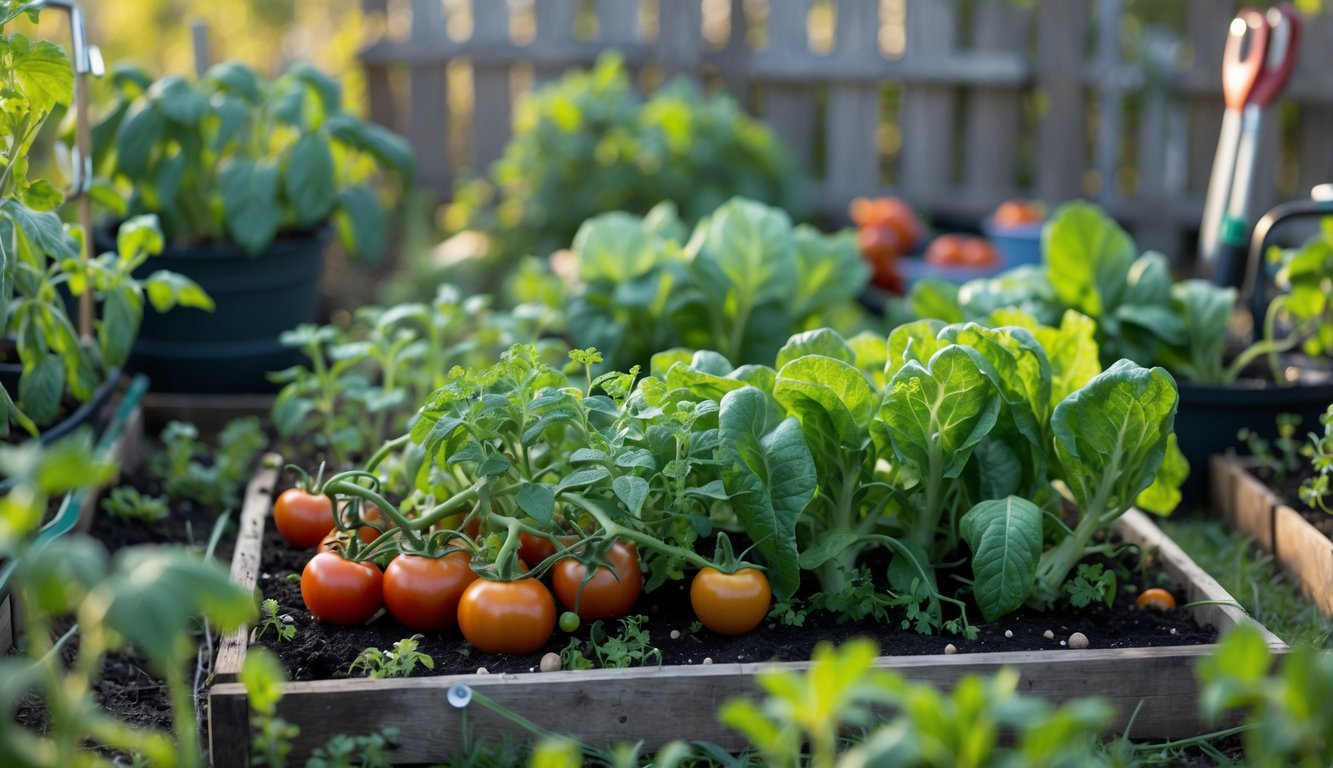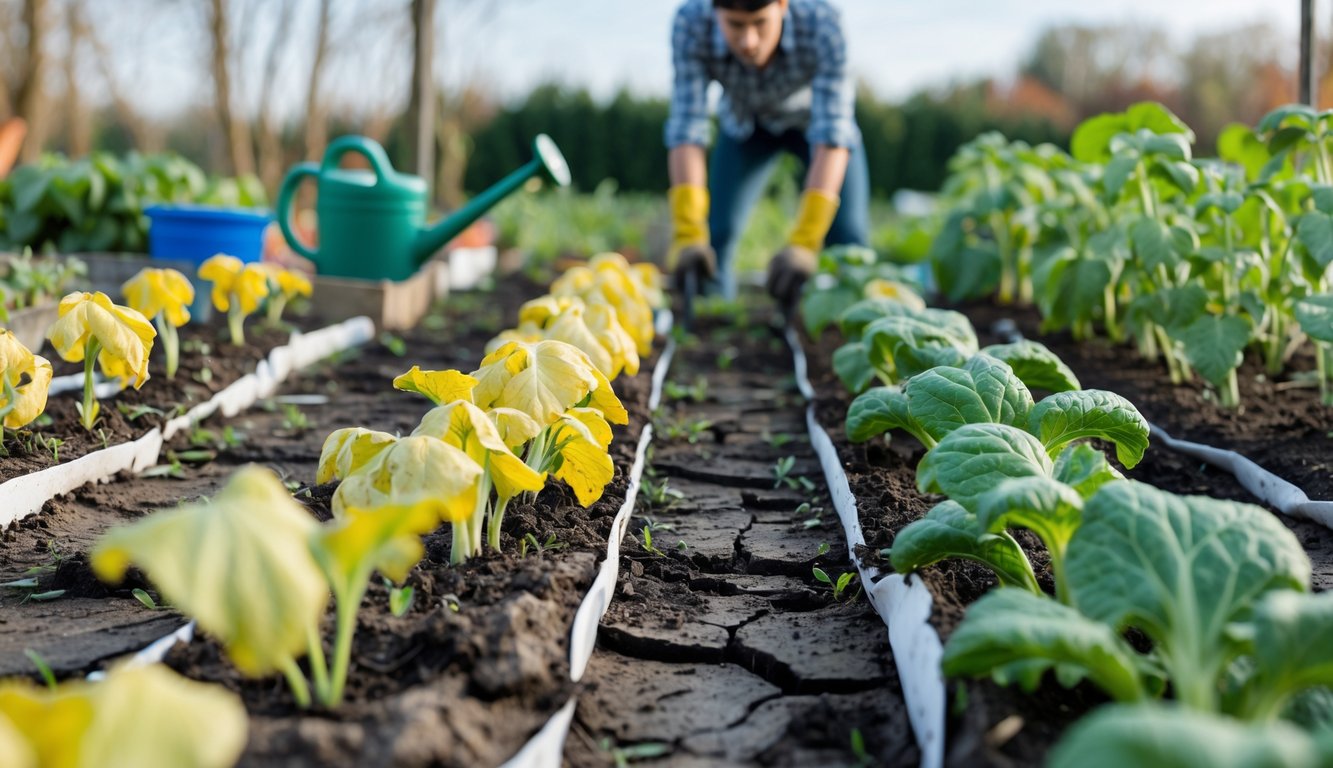
Overcrowding and Poor Spacing

Every year, I ignore the “space 18 inches apart” advice and just cram everything in. Why not? Seed packets are vague, my patience is nonexistent, and I always think more is better. Spoiler: it’s not. Overcrowding tanks the whole thing, and skipping bean stakes? I end up with a tangled heap and no beans. Story of my life.
Crowding Plants and Its Effects
I always run out of space before I run out of seeds. Every. Single. Time. Still, I keep shoving “just one more tomato” in. You’d think after a couple of sad harvests I’d learn, but no. Overcrowding really does kill yields and breeds disease, but apparently I need to fail annually to remember. Plants need air, not just light. Otherwise, mildew parties under the leaves and aphids take over. Last June, I yanked half my carrots and realized I’d ruined my lettuce for nothing. Following the seed packet? Not just for nerds. Succession planting works, but only if you thin stuff out before it’s a jungle.
Packets talk about leaf spread and root competition—sure, but who remembers which plants hate touching? Not me. Every spring, I’m googling again. It’s a cycle. I never learn.
Not Providing Enough Support or Trellis
Peas, cukes, pole beans—they’re not going to “climb” just because you want them to. By June, it’s all a green mat, and I’m crawling around in the dirt looking for lost squash. Ruined another pair of boots last year. Garden centers sell the world’s flimsiest tomato cages, like it’s a prank. I skipped supports once and ended up with rotten fruit and snapped stems. “Squash soup” was literal, not a recipe.
Best supports? Hog panels, old fencing—anything but bamboo chopsticks. Keeps plants up, air in, and slugs mostly out. Nobody brags about fixing collapsed bean vines at sunset, but I do it every year. My neighbor ties up peppers with Christmas ribbon. Looks festive, kills plants. I always lose my plant labels by May, right after the measuring tape disappears.
Neglecting Fertilization and Plant Nutrition

Ever wonder why your peppers flop over or tomatoes go yellow, even though you “followed the rules”? Nutrition is the socks of gardening—everyone knows you need it, but nobody wants to argue about how much or what kind. Too little, too much, both wreck stuff.
Over-Fertilizing or Not Feeding Your Plants
First time I tried blood meal (neighbor insisted), my kale turned almost black. Didn’t measure. Just dumped it on. Plants shot up, but the roots and fruit? Meh. Classic beginner move: skip feeding and call it “natural gardening”—enjoy your sad beans. Simple Garden Life says too much nitrogen just gives you big leaves and nothing else. Nobody wants to haul fertilizer or decode N-P-K, but Lazy Dog Farm guy told me, “It’s a schedule, not a suggestion.” His tomatoes looked fake, they were so perfect.
Bagged fertilizers are confusing, slow-release granules sound easy, but if you don’t test your soil (and I never do), it’s all guesswork. Urban Survival Site says test first. I forget to check labels, so my yellow leaves are probably a potassium problem, not a fish emulsion shortage. Who knows.
Ignoring Weeding and Mulching

Weeding and mulching are the chores everyone skips, then pays for. I still underestimate how much they matter. Anne from the extension office has opinions (and a weed-free dahlia bed), but I never listen until it’s too late.
Underestimating the Impact of Weeds
Skip one weekend of weeding and suddenly the spinach bolts and onions look ashamed, hiding under lamb’s quarters. Weeds aren’t just freeloaders—they bully seedlings, suck up nutrients, and invite pests. I’ve watched lettuce shrivel up months early, which nobody mentions in those glossy “how-to” guides.
Nancy Bubel (yeah, I read her book) says one weed can make thousands of seeds. University of Minnesota claims dandelions spit out 15,000 seeds per plant. That’s not on the fertilizer bag. Ignore weeds, and you’re done before you start. Sometimes I spend more time looking for my trowel than actually weeding.
Skipping Mulching Basics
Bought fancy cedar mulch because the bag looked nice (and I fell for the marketing, whatever). Without mulch, watering turns into a daily ritual of futility. Soil dries out, crusts over, roots get stressed, and weeds take over. Mulching keeps things stable, but nobody wants to admit it’s boring.
I’ve tried newspaper, grass clippings, weird fabric—sometimes worms love it, sometimes slugs throw a party. My landscape architect neighbor says mulch thickness isn’t a guessing game. Less than 2 inches? Weeds win. Too much? Stems rot. Skipping mulch seemed harmless until my tomatoes became a cat playground. Pretty garden pics never show the empty mulch bags. I’ll keep buying them anyway—losing basil to drought is just not worth it.